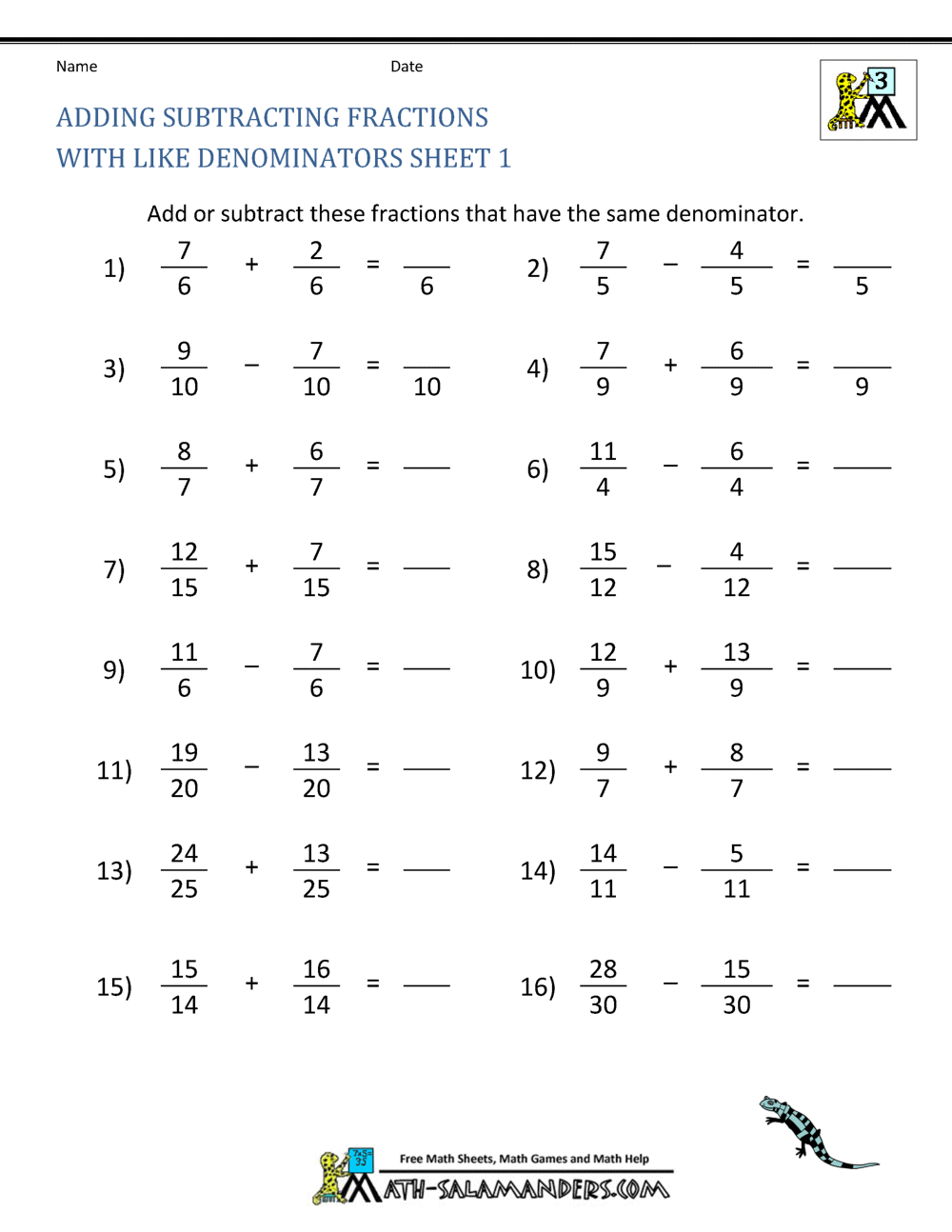Unlocking Fractions: Addition and Subtraction for Grade 2
Ever wondered how to split a pizza equally or share a batch of cookies fairly? That's where fractions come in! For second graders, understanding fractions opens a whole new dimension in math. This guide explores the fascinating world of adding and subtracting fractions for grade 2, breaking down complex concepts into bite-sized pieces.
Adding and subtracting fractions at this level primarily involves fractions with the same denominator (the bottom number). Think of it like working with slices of the same-sized pie. If you have one-fourth of a pie and add another one-fourth, you get two-fourths. It's as simple as adding whole numbers, but with a fraction twist.
Historically, fractions emerged from the need to represent parts of a whole, evolving alongside measurement and division. For second graders, these concepts become a crucial foundation for future math learning. A strong grasp of fraction operations is fundamental for understanding decimals, percentages, ratios, and more complex mathematical concepts later on. It also fosters critical thinking and problem-solving skills.
One of the main challenges for young learners is visualizing fractions. Concrete examples, like dividing real objects, can bridge this gap. Another hurdle is understanding the importance of common denominators when adding and subtracting. Using visual aids and manipulative tools can make these concepts more accessible.
Let's define a few key terms. A fraction represents a part of a whole. The denominator (bottom number) tells us how many equal parts the whole is divided into. The numerator (top number) tells us how many of those parts we have. For example, in the fraction 1/4, the whole is divided into four equal parts, and we have one of those parts.
Here’s a simple example: 1/4 + 1/4 = 2/4. We are adding the numerators (1 + 1 = 2) while the denominator stays the same (4). Similarly, 3/5 – 1/5 = 2/5. Again, we subtract the numerators (3 - 1 = 2) and keep the denominator the same (5).
Understanding fraction addition and subtraction provides several benefits. Firstly, it strengthens number sense and helps children understand relationships between numbers. Secondly, it lays the groundwork for more advanced math concepts. Thirdly, it builds problem-solving skills applicable to everyday situations.
To succeed with fraction addition and subtraction, start with visual aids like fraction circles or strips. Practice with simple examples and gradually increase complexity. Use real-world scenarios, like sharing food or dividing objects, to make learning more engaging.
Here's a simple step-by-step guide: 1) Ensure the denominators are the same. 2) Add or subtract the numerators. 3) Keep the denominator the same. 4) Simplify the fraction if possible (e.g., 2/4 can be simplified to 1/2).
Advantages and Disadvantages of Early Fraction Introduction
| Advantages | Disadvantages |
|---|---|
| Stronger Number Sense | Potential for Confusion if Concepts Aren't Presented Clearly |
| Foundation for Advanced Math | Need for Engaging and Concrete Learning Materials |
| Real-World Application | Risk of Rote Memorization without Understanding |
Best Practices: 1) Use visual aids. 2) Connect to real-world scenarios. 3) Start with simple examples. 4) Encourage hands-on activities. 5) Provide opportunities for practice and feedback.
Real-world examples: sharing cookies, dividing pizza slices, measuring ingredients in a recipe, sharing toys, splitting a group of friends into teams.
Challenges can include difficulty visualizing fractions, confusion with different denominators, and applying the concepts to word problems. Solutions include using manipulatives, providing clear explanations, and offering varied practice opportunities.
FAQs: What is a fraction? What is a numerator/denominator? How do I add fractions with the same denominator? How do I subtract fractions with the same denominator? Why are fractions important? How can I help my child learn fractions? What resources are available for learning fractions? What are some common mistakes to avoid?
Tips and tricks: Use visual aids, relate fractions to real-world objects, practice regularly, and break down complex problems into smaller steps.
Mastering addition and subtraction of fractions in grade 2 is a pivotal step in a child's math journey. It empowers them to understand parts of a whole, build a solid number sense, and develop essential problem-solving skills. By incorporating visual aids, real-world examples, and consistent practice, we can equip young learners with the confidence and competence to tackle more advanced math concepts in the future. This fundamental skill not only opens doors to future academic success but also equips them with practical tools for navigating everyday situations. Embrace the opportunity to make fractions fun and engaging for second graders, setting them on a path of lifelong mathematical understanding.
Thinking of donating blood with tattoos what you need to know
Unlocking the power of thunderous meaning and impact
Unmasking creativity exploring the world of silhouette spiderman svg free resources














